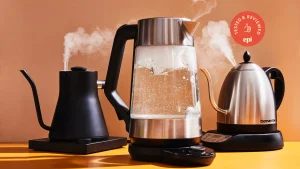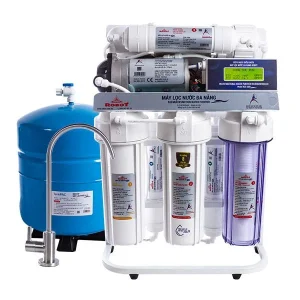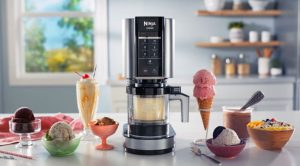Electric Pressure Cooker: What Is It? How It Works, Applications, and Safe Usage Tips

An electric pressure cooker is a modern kitchen appliance designed to cook food quickly and efficiently by using high pressure and heat. It has become a popular tool in kitchens worldwide, known for saving time and delivering delicious results. In this article, we will explore what an electric pressure cooker is, how it works, its applications, and provide essential safety tips for using it effectively.
1. What Is an Electric Pressure Cooker?
An electric pressure cooker is a versatile cooking appliance that uses steam and high pressure to cook food quickly. Unlike traditional stovetop pressure cookers, electric pressure cookers are fully automated, allowing for hands-free operation once the cooking program is set. They are equipped with various cooking modes for different foods such as stews, soups, rice, and even desserts.
Types of Electric Pressure Cookers:
- Standard Electric Pressure Cookers: These are basic models that offer a set of preset functions such as stew, rice, soup, and manual pressure cooking.
- Multi-Cookers: These advanced models combine multiple cooking functions like pressure cooking, slow cooking, sautéing, steaming, and even baking. The Instant Pot is a popular example of a multi-cooker.
- Smart Electric Pressure Cookers: These feature smart technology, such as Wi-Fi or Bluetooth connectivity, allowing you to control the cooker remotely using a smartphone app.
Uses of Electric Pressure Cookers:
- Cooking Grains and Beans: Electric pressure cookers are ideal for cooking rice, beans, lentils, and quinoa quickly.
- Making Soups and Stews: They can be used to make flavorful soups and stews in a fraction of the time it would take using traditional stovetop methods.
- Tenderizing Tough Meats: The high pressure in the cooker breaks down the fibers in tougher cuts of meat, resulting in tender and flavorful dishes.
- Cooking Vegetables and Eggs: Electric pressure cookers are also useful for cooking vegetables and hard or soft-boiled eggs in a short amount of time.
2. How Does an Electric Pressure Cooker Work?
An electric pressure cooker works by using high-pressure steam to cook food quickly. Here’s a breakdown of how it operates:
Key Components of an Electric Pressure Cooker:
- Pressure Lid: The lid seals the cooker tightly, trapping steam and creating pressure inside. It has a locking mechanism to ensure it stays closed during cooking.
- Heating Element: The heating element at the bottom of the cooker generates the heat necessary to bring the water to a boil and create steam.
- Pressure Control Valve: This valve maintains the internal pressure by releasing excess steam when needed, ensuring that the pressure stays within safe limits.
- Control Panel: The control panel lets users select cooking functions, adjust cooking times, and set the desired pressure levels. It often features preset programs for specific types of food.
- Inner Pot: The removable inner pot holds the food and liquid being cooked. It is typically made from stainless steel or non-stick material.
Cooking Process:
- Adding Ingredients: The ingredients, along with the required liquid (usually water or broth), are placed into the inner pot.
- Sealing the Lid: The lid is closed and locked in place, creating a sealed environment inside the cooker.
- Heating and Pressurizing: The heating element brings the liquid to a boil, generating steam. As the steam builds up, it increases the internal pressure, which raises the boiling point of water, allowing food to cook faster.
- Cooking Time: Once the cooking time is set, the cooker maintains the high pressure and temperature until the food is done.
- Releasing Pressure: After cooking, the pressure can be released either naturally (by turning off the cooker and allowing the pressure to decrease on its own) or quickly using the pressure release valve (quick release method).
3. What Are the Applications of an Electric Pressure Cooker?
An electric pressure cooker is highly versatile and can be used for a wide range of cooking tasks. Here are some of its key applications:
Residential Use:
- Quick Meal Preparation: Electric pressure cookers are perfect for busy households, as they can prepare meals in a fraction of the time compared to traditional cooking methods. You can cook rice, soups, stews, and even desserts like cheesecake in no time.
- Batch Cooking: If you need to prepare large quantities of food, an electric pressure cooker is ideal for batch cooking, especially for grains, beans, and meats.
- Cooking Tough Cuts of Meat: The high-pressure environment tenderizes tougher cuts of meat, allowing you to cook them quickly without losing flavor or texture.
Commercial Use:
- Restaurants and Catering: In commercial kitchens, electric pressure cookers are used to prepare food quickly for large groups. They help streamline the cooking process and ensure consistent results for dishes like soups, stews, and rice.
- Food Service Providers: Food service providers, such as cafeterias and buffets, often use electric pressure cookers to prepare large amounts of food, as they can cook quickly and efficiently without compromising quality.
4. How to Use an Electric Pressure Cooker Safely
While electric pressure cookers are designed to be safe, it is important to follow safety guidelines to avoid accidents. Here are some essential safety tips:
Before Cooking:
- Check the Seal and Gasket: Ensure that the sealing ring and gasket are in good condition and properly placed to prevent any steam leakage.
- Use the Right Amount of Liquid: Always add enough liquid to the cooker. If there is not enough liquid, the pressure cooker may overheat or burn the food.
- Place on a Stable Surface: Position the electric pressure cooker on a flat, stable surface to avoid tipping over during use.
During Cooking:
- Never Open the Lid During Cooking: Once the cooking process has started, never attempt to open the lid. The cooker is under high pressure, and opening it can cause hot steam to escape, potentially causing burns.
- Use the Pressure Release Valve Properly: Be cautious when releasing the pressure. Always follow the manufacturer’s instructions to release steam safely. Use the quick release method carefully, as hot steam will escape when you turn the valve.
- Monitor Cooking Progress: While the cooker is automatic, it is still important to monitor the cooking progress. Ensure that the cooker maintains the correct temperature and pressure during the cooking process.
After Cooking:
- Allow Pressure to Release Naturally (if preferred): After cooking, you can either allow the pressure to release naturally or use the quick-release valve. The natural release method is safer, especially for dishes that tend to foam or splatter.
- Unplug After Use: Once the cooking process is complete, always unplug the electric pressure cooker. Allow it to cool down before cleaning it.
- Clean Regularly: Clean the cooker after each use, paying attention to the lid, pressure valve, and inner pot. Use non-abrasive cleaners to avoid damaging the surface.
Conclusion
An electric pressure cooker is a valuable tool in any modern kitchen, offering speed, efficiency, and versatility. By understanding how it works, its wide range of applications, and following proper safety guidelines, you can make the most of this appliance. Whether you’re cooking for a busy family or preparing meals in bulk, an electric pressure cooker can make meal preparation easier and more enjoyable.







